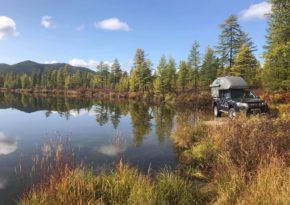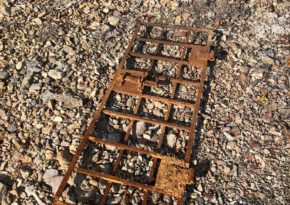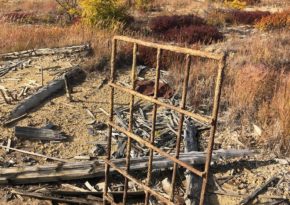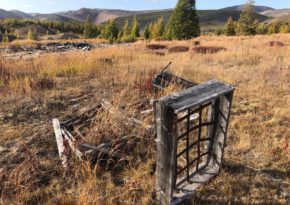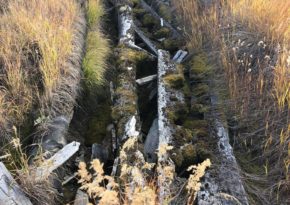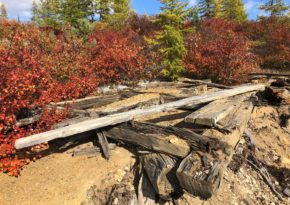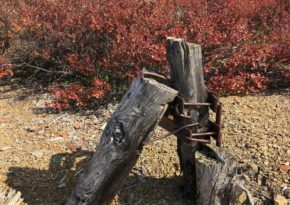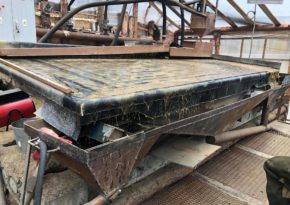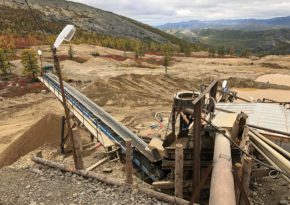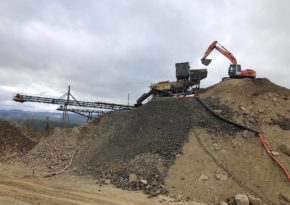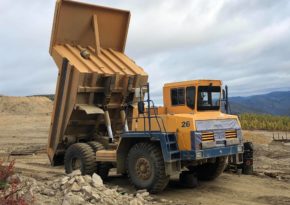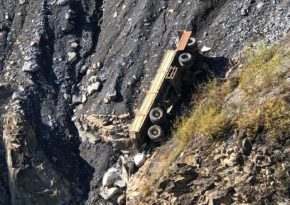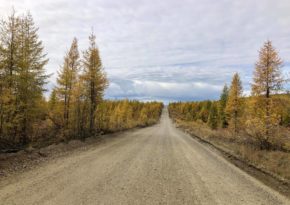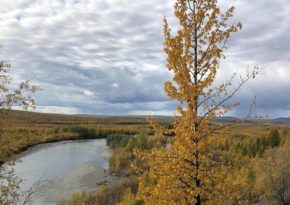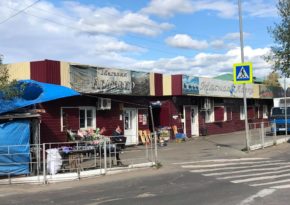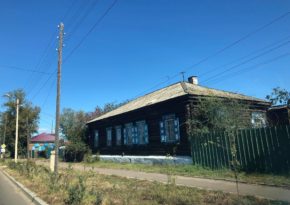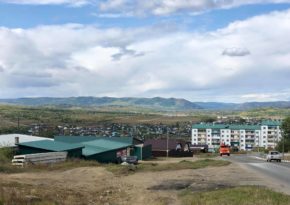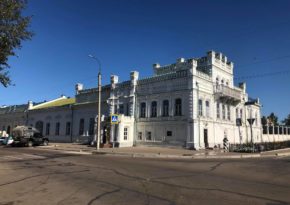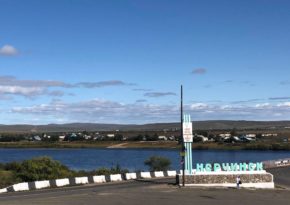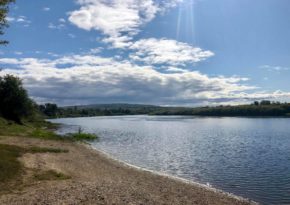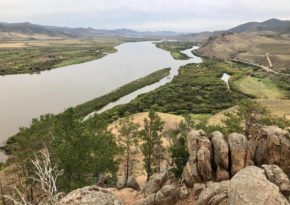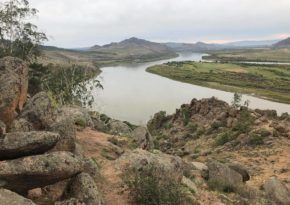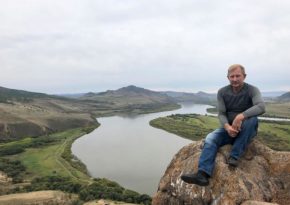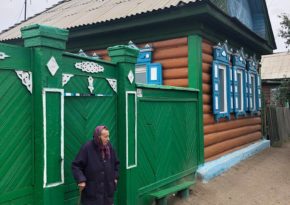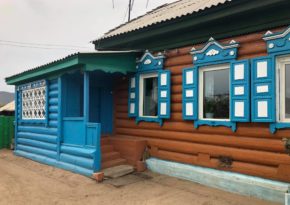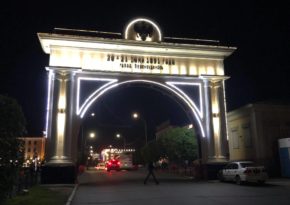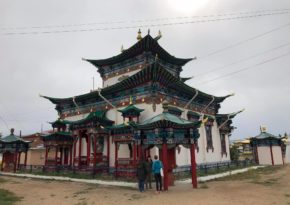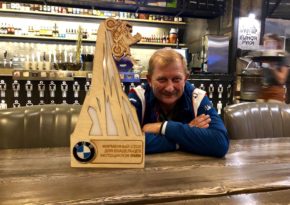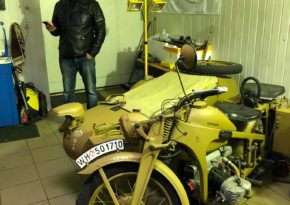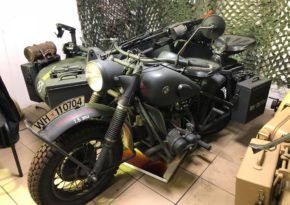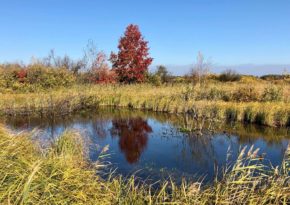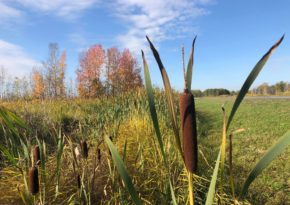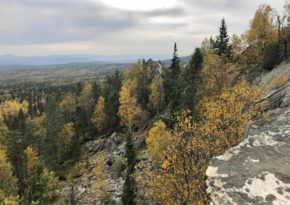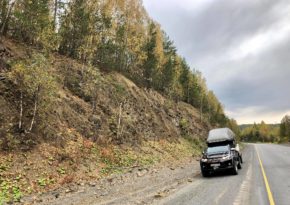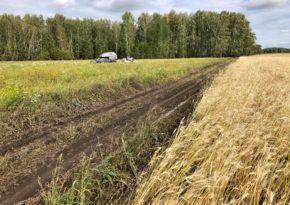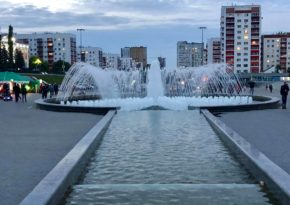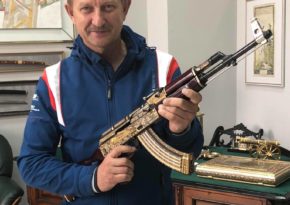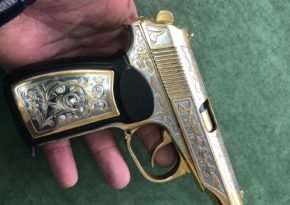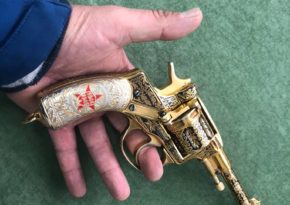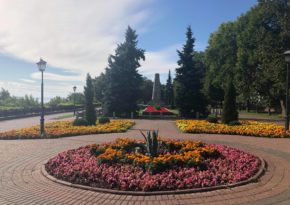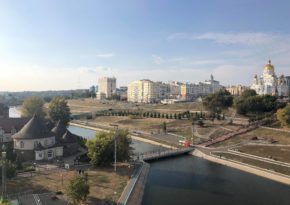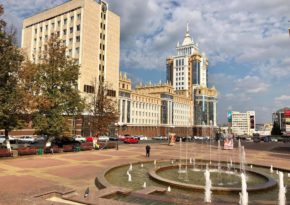Heading for Magadan. Our return.
The way back home.
If someone thought that our journey was over, he was mistaken! Magadan was not the finish line but the tipping point, the middle of the way. Our adventure continues but in a different format. Yesterday I handed over my motorbike to a transport company, which promised to deliver it to Podolsk in a month and a half. Oleg went home by plane, and I headed back alone by a wonderful Toyota Hilux car with a Geocamper residential module.

I'm going along Kolyma again. However, now it's not that unpredictable and unknown as it was just ten days ago. The weather is gorgeous, the road is dry and the nature is even more picturesque! Well, let's go!
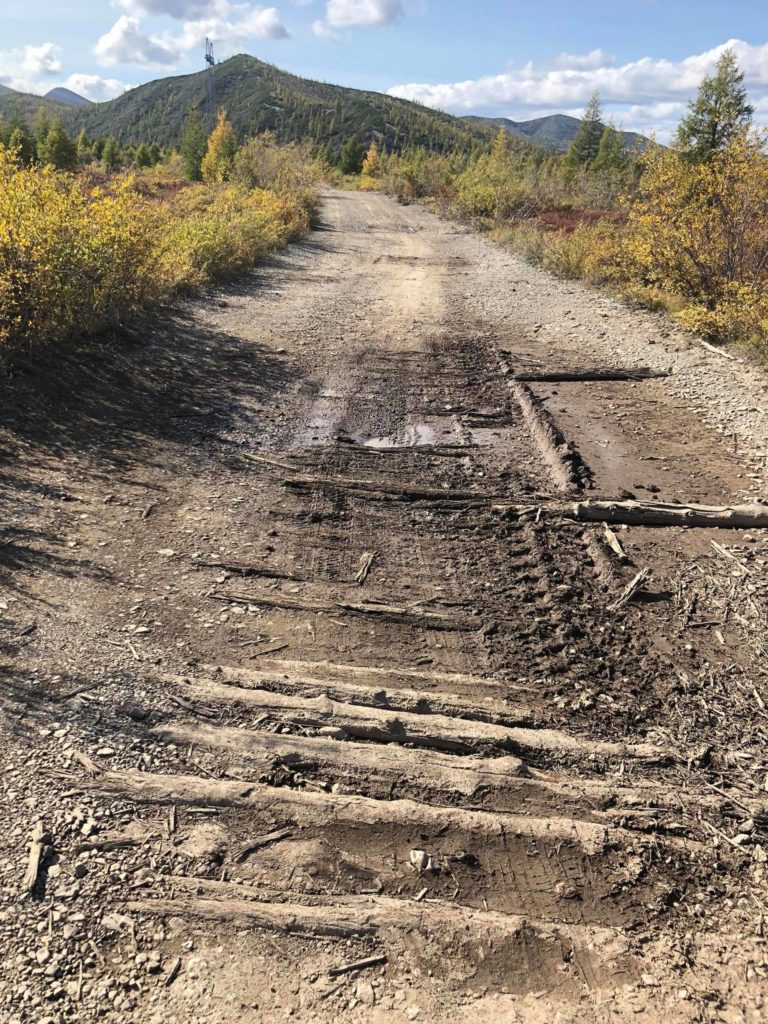
Kheta is one of hundreds of Dalstroy prison camps located along the Kolyma highway. Our guide around Magadan, Eugene, told me about this place. The camp is situated a few kilometers from the highway and you won't find any like it. Moreover, it is dilapidated as well as the others of that kind. Wooden barracks and fences have been collapsed and rotted. And only barbed wire on fallen poles and objects, which is scattered everywhere around, can explain what was held here 70-80 years ago.
For more than an hour I was wandering around this blood-soaked land. While driving along Kolyma, I was listening to the audiobook of Varlam Shalamov's "Kolyma stories". And now, when I mentally went into the barracks, I imagined wooden bunks standing in two tiers along the walls, bars on the windows, people squatting at the red-hot stove and warming their numb hands.
Winter in this area is severe, frosts can be up to -50°C, but people worked every day, no matter whether it was cold or bad weather. Many could not stand it physically, someone was broken mentally. The first prisoners who built the Kolyma Highway in 1932-1934 had the hardest work. Many remained lying in this frozen ground forever.
We all used to read Jack London's books when we were children and watched films about the gold rush in Alaska. From these stories I had got an idea of how gold is mined.
Prospectors and other adventurers usually found it in a river or a spring, then "staked" the site and began to wash the soil on the tray with their hands. This way they sifted out gold sand and bullions of various sizes.
A hundred years ago everything was done on Kolyma the same way. But at the late 1920-s a huge Dalstroy combine was created according to the decree of the Politburo of the VKPb. It was done in order to extract mineral resources (first of all, gold) on Kolyma. Thousands of employees and prisoners of the camps built roads, bridges and mined natural resources. That's why today you can't find some gold in rivers or springs because all the ground has been shoveled several times. Nowadays there functionate the gold mining enterprises called artels, which are well-equipped for the extraction and processing of gold-bearing rocks. They tear down the hills and turn them into grey mountains of proceeded rock.
I spent almost the whole day at one of these enterprises. The head of the site, whose name was Rinat Gimadeev, shared with me his knowledge and showed the complete production process from beginning to finish. He guided an excursion following all the stages.
Therefore, thanks to modern technologies and multimillion-dollar equipment, it has become possible to extract gold that is impossible to notice with a naked eye.
Actually, I haven't seen gold itself at this mine. It simply cannot be spotted or touched there.
But I found it somewhere else…
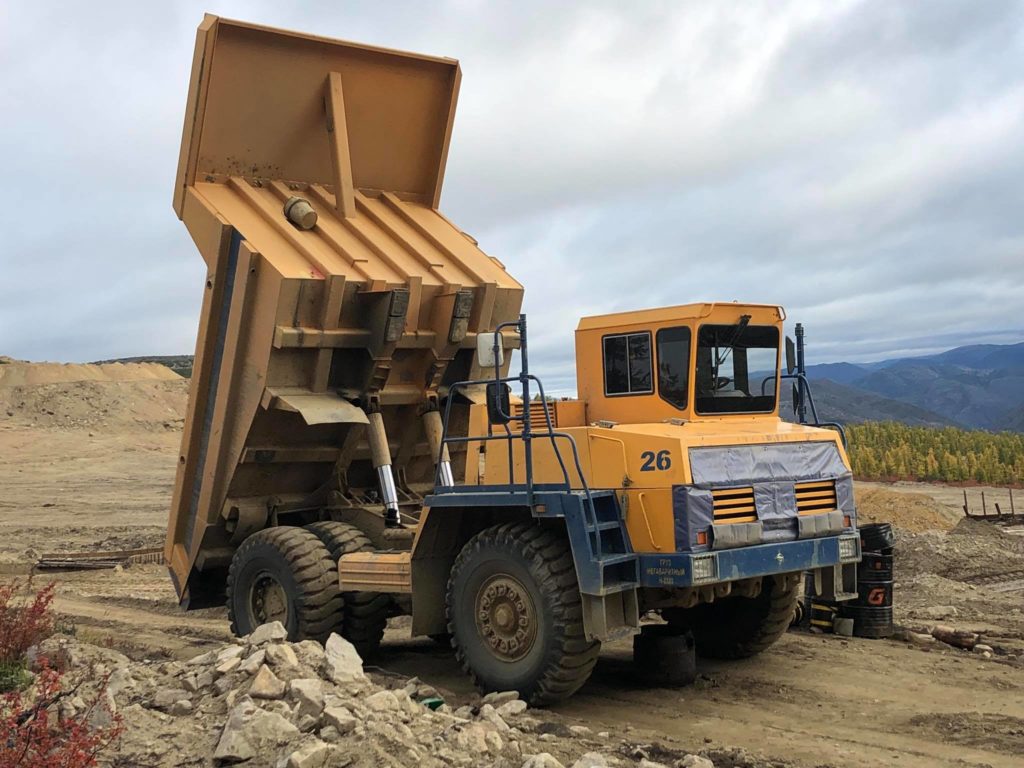
Rain on the Kolyma highway is a good thing. Only if it doesn't last long and isn't strong. The rain pours down the terrible brown dust, which curls in huge clouds behind oncoming trucks. When you get into this "nuclear explosion", you don't see your own car hood, so you keep driving a couple of following hundred metres by chance. And if you catch up with a truck crawling up the pass, it's even worse. Overtaking in conditions of zero visibility turns into a game like "Russian roulette".
And it's easy and pleasant to drive during the rain. By car, of course. It isn't relatable to a motorbike journey, as there are specific details.
It started raining closer to afternoon. The drops first gathered into endless dirty puddles, which overflowed and then connected with each other into streams running along the road and washing out narrow channels. And if the clouds cover the sky for a long time, then it is a problem. A small stream, which was gaily murmuring in the groove along the ditch, turns into a stormy stream rushing down.
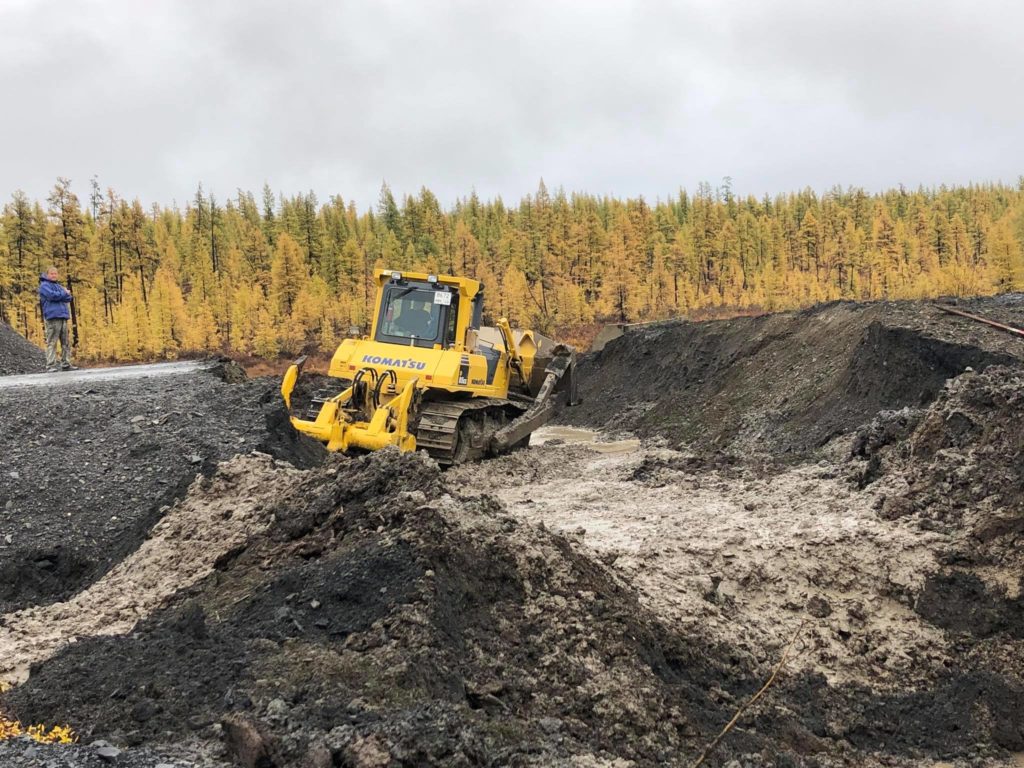
And now, having overflowed, it runs across the road and washes away crushed stones, sand, clay and all the materials that the Kolyma highway consists of. If the flow is strong enough, then it can take a section of the road with it. Therefore, a several metres deep and wide pit is formed in its place.
Trucks and SUVs line up along the curb, waiting for the repair crew. But on Kolyma life flows slowly. No one is in a hurry, including the road services. The waiting can last for a day or more and this is a habitual thing.

Yesterday an accident took place on one of the descents, 140 km from Ust-Nera: a Kamaz truck with a load turned across the highway so that its rear axle hovered over the cliff. It happened at 1 a.m. and I drove up to this place only after lunch.

A chain of trucks stood on both sides and rare passenger cars squeezed between the Kamaz cab and the cliff. There is no detour and no communication link. Taking a certain risk, I crawled along the edge of the cliff a millimetre from the truck. Later I found out that the truck drivers pulled the load from the semi-trailer with cables (that truck was loaded with huge engines) and dragged the unlucky truck aside themselves. The rescue crew hadn't come.
In general, Kolyma can be very treacherous, so the sight of the car remains, lying in the abyss, is a common phenomenon here.
Every 30-50 km along the highway and on the tops of the passes there are parking lots (some covered areas where you can stay overnight or make a repair). These parking lots are equipped with the waste disposal device only (that looks like an iron barrel painted red). Large fuel and dump trucks usually park to spend the night there. I also used this service several times, since it was problematic to find a hotel for a 2000 km distance of the Kolyma highway.
If you're going to drive along Kolyma, take a couple of bottles of vodka with you. It still serves as a local currency, which you can present to a good person for help on the road.
The rain stopped, the sun came out and the taiga along the highway began shining gold.
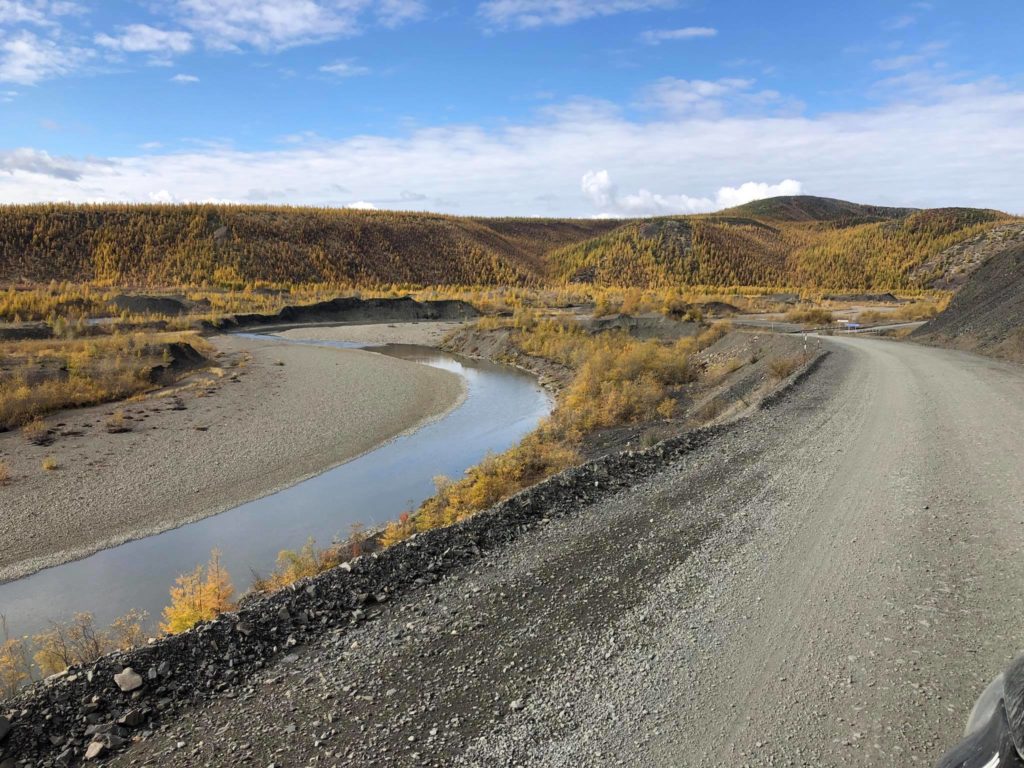
The name of one of Shalamov's stories is "The Golden Taiga". And it is an amazing and outstanding, beautiful sight!
I fell in love with Kolyma.
"Actually, travelling by car is quite nice too sometimes!", I thought while hitting the wheel in another deep puddle and smearing the wipers on the windshield, which dripped brown slush..
The weather became bad again. After Yakutsk it was noticeably colder and, as I was approaching Aldan, it started raining with snow. The golden taiga turned into black and white.
I imagined myself going by motorbike: soaked, frozen, dirty… And what if I punched a tire? Brrr... By the way, yesterday was the first time I repaired the wheel on a Toyota (a sharp stone had pierced the tire). I was lucky that it had happened near the village, where I found a tire service.
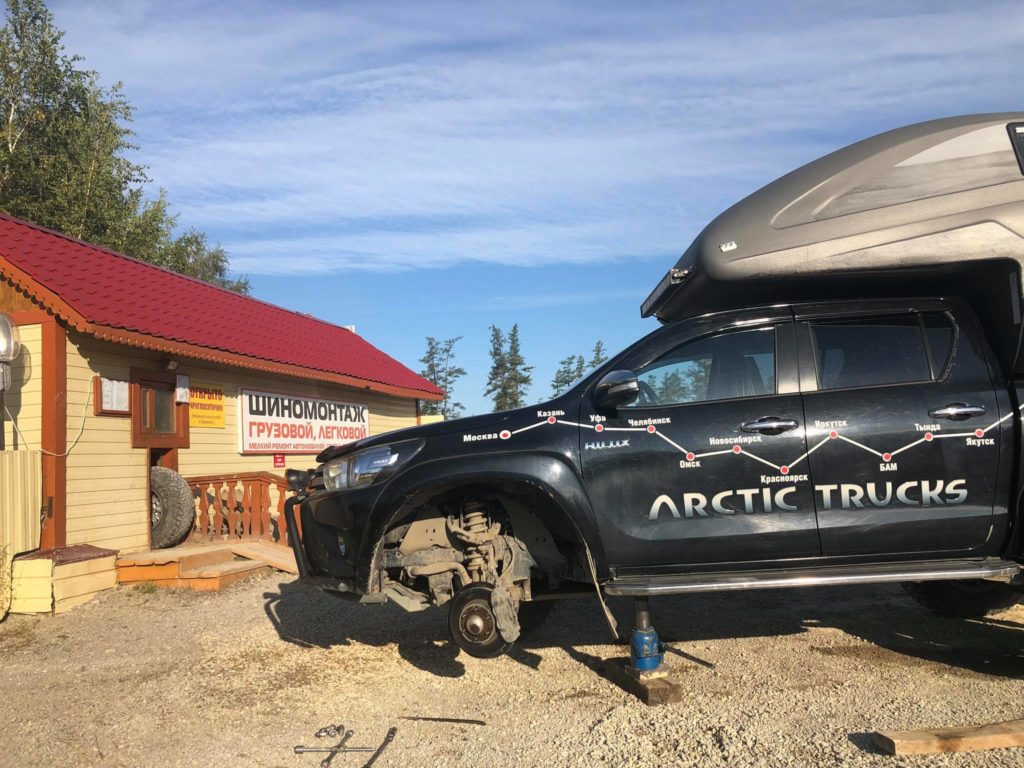
The way back home was interesting too. I was recognising the familiar places, meeting the friends that I had got acquainted with on the way to Magadan once again.
On the border with Yakutia I saw a traffic police post and the same traffic cop, whose name was Sanya. He smiled when he saw a car driving up, we hugged and talked about everything for half an hour. He is such a cool man!
I made a stop at the old man-yogi's place. I brought him a watermelon from Magadan and he gave me a pinch of golden sand. A little, of course, but it's the real one from Kolyma!
And 470 km from Yakutsk I caught a glimpse of a familiar tent and Sanya Gabyshev on the roadside. He is the one who goes to Moscow on foot with his dog. I stopped, poured the water into all the pots and bottles for him (he was very happy, since he had got no water at all). I also gave him bread and canned food. He was still determined to overcome the whole way. Just a crazy guy! ;)

Further on the way I met a man with a backpack. I immediately understood that he was a traveller and stopped nearby.
"Could you give me a lift to Yakutsk?"
"Okay. Get in, you, trampy".
Kostya appeared to be a very interesting 27-year-old guy. He had graduated from university, knew English, Spanish and a little bit of Chinese. He had been hitchhiking around the world for several years and had already passed South America, Australia, Southeast Asia, 45 countries in total. Then he was returning from Chukotka, where he had spent the whole summer. He planned to visit Vladivostok and Thailand, where he would work as a guide in a local travel company for three months in order to save some money and then go hitchhiking to Africa again. All his property he always takes with him in a backpack. It turned out that that kind of hitchhikers wandered around the world and helped each other out. They had their own websites, blogs and other means of communication. They shared the news with each other, helped with the accommodation and even the work.
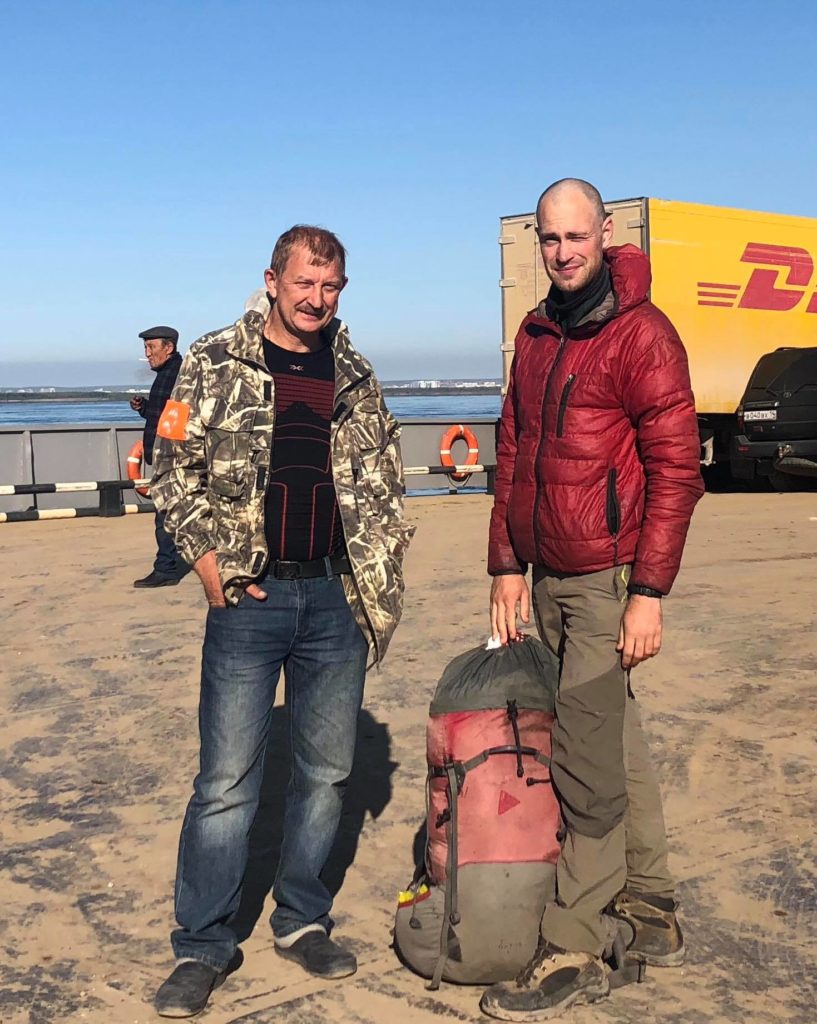
It's like they have got their own world.
And I have got friends too, who were waiting for me in Neryungri. There we stayed in a clean hotel, had dinner in a restaurant and went to the sauna, which was just right!
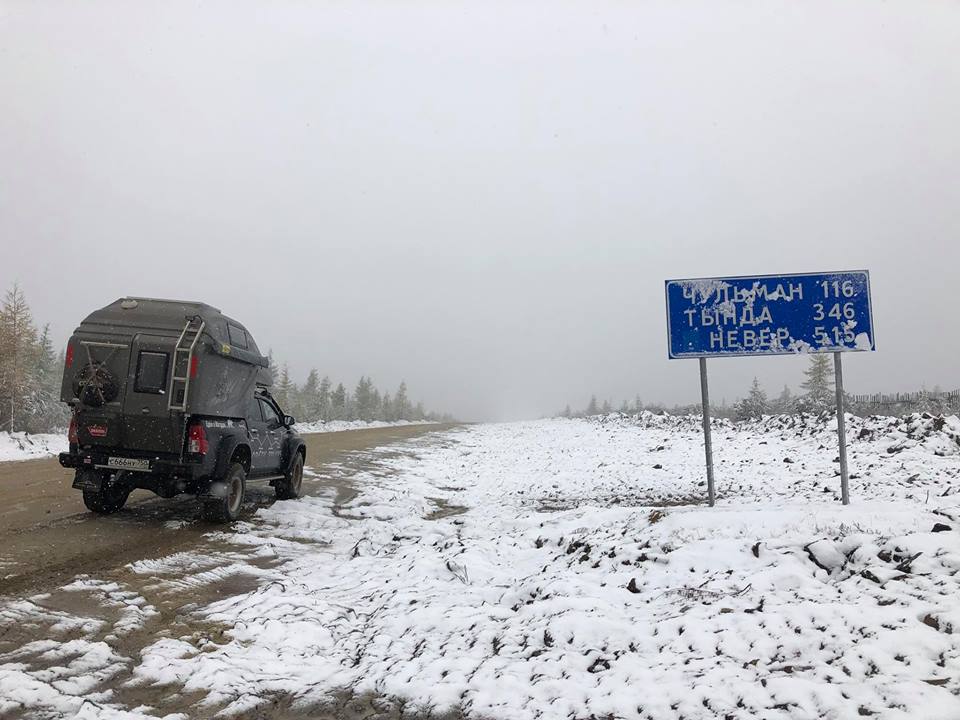
I got from Neryungri to Tynda in the evening along a familiar broken grader, which was combined with pieces of asphalt highway. It sharply turned cold and started snowing.
I didn't stay in Tynda, I just bought some groceries at the market and drove on. There were about two hundred kilometers of a terrible road, worse than a rubble one, from Tynda to Nevers (in which there's a turn to the Khabarovsk-Chita highway). I followed pit by pit along the whole way.
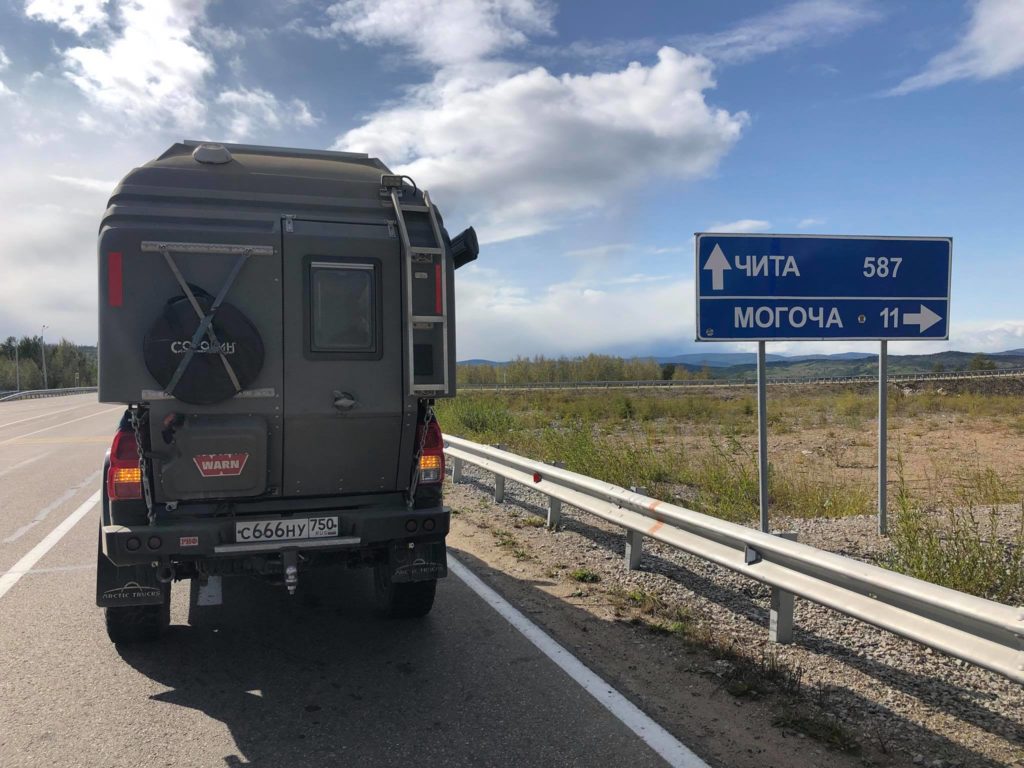
The Amur highway. Such a perfect asphalt… used to be. Apparently, not long ago. But now it periodically turns into "Amur waves", so if you don't slow down in time, you can take off over the road with all four wheels. Or with two wheels, if you go by motorbike.
The track itself is quite monotonous and boring. On the left there are hills and endless sparse forest and on the right you see the same landscape. The more boring road you can see only in Kazakhstan, where there isn't a single tree for hundreds of kilometres.
Suddenly, I came across a pointer to Mogocha on the right. A phrase from the distant past immediately flashed in my head: "God created Sochi and the devil created Mogocha".
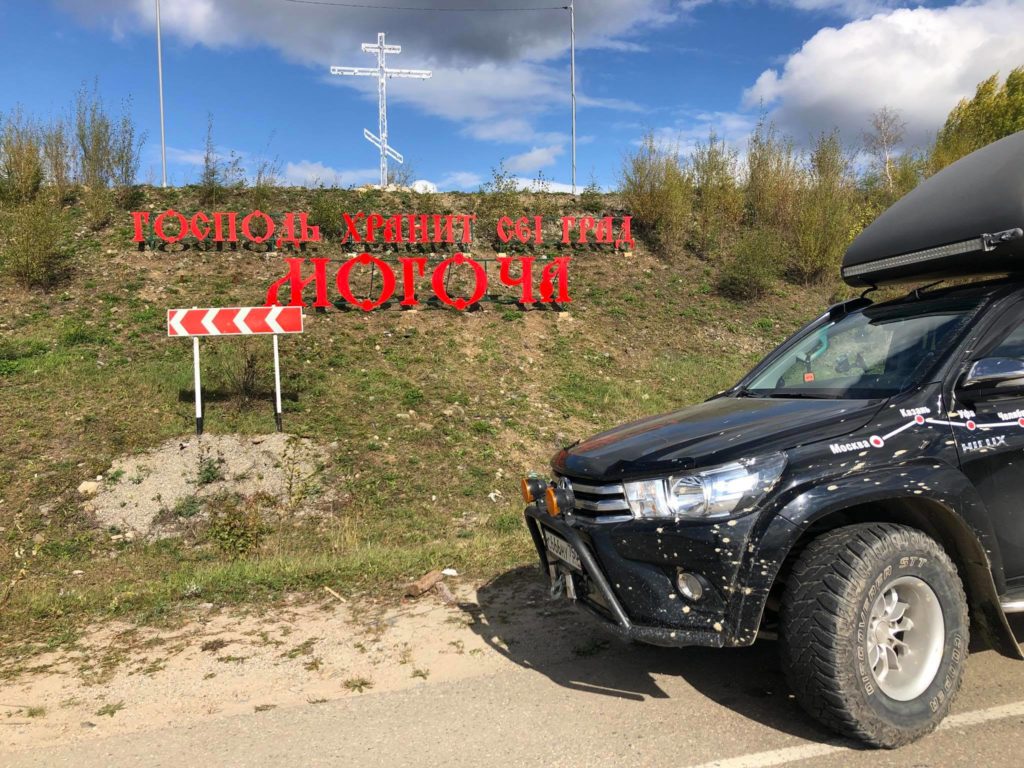
When I studied at a military school in the distant 80s, it was believed that to get after graduation in Zabaykalsky Krai for further service meant to get into the very damn middle of the world. And Mogocha was the definition of such a place. I had been lucky to escape this pleasure back then, but now I decided to visit this wonderful town. In general, those rumours turned out to be not so far from reality. Mogocha is a faceless town with grey five-storey buildings and dirty streets. Back in the 1990s.
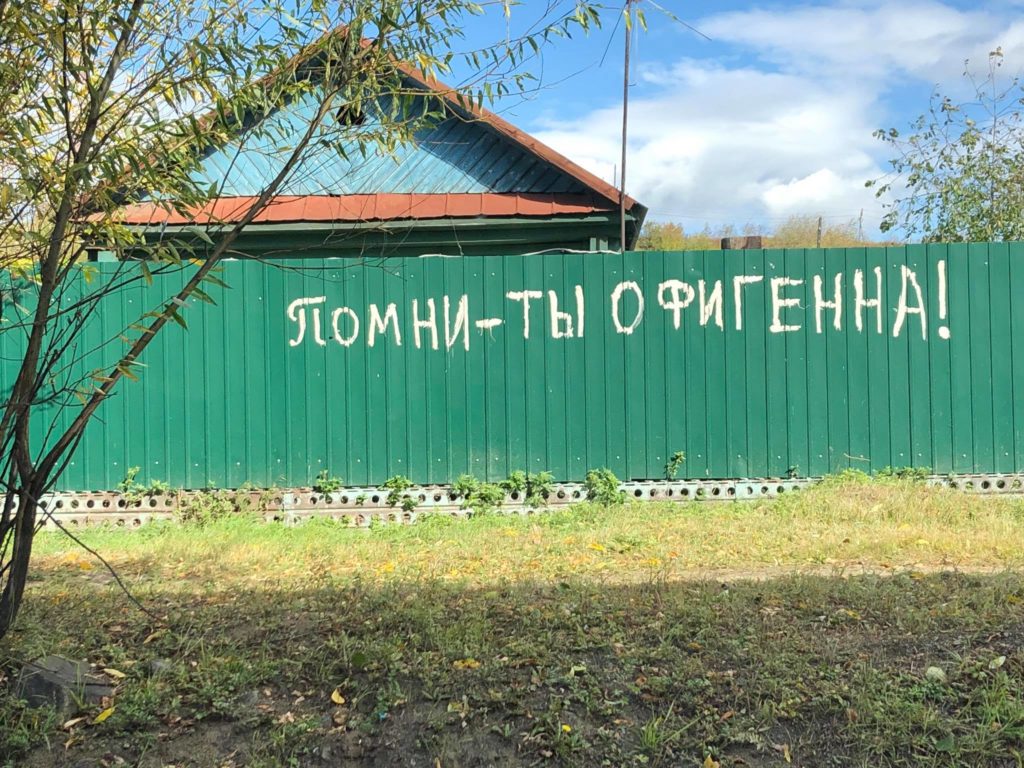
When I asked the locals, what attractions I should see in their town, I saw surprised eyes in response. "In our town? Here? Nothing!"
My next overnight stop took place in the small town Nerchinsk, 250 km from Chita. Unlike Mogocha, there is something to see because it is one of the oldest towns in Zabaykalsky Krai with an interesting historical background and architecture.

For example, a merchant Butin's palace and a museum in it is worth your visit. At the same time one can get acquainted with the history of the development of the Zabaykalsky Krai territory. Personally, I did it with great pleasure.
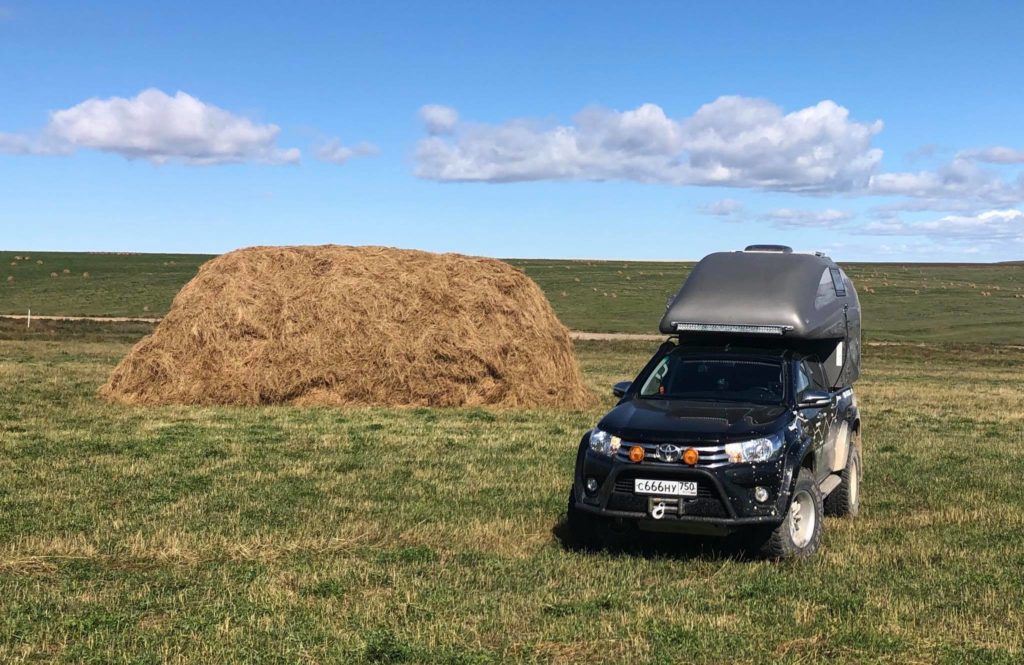
I'm lucky to meet circumnavigators on my way! Today I met Katya Dubanevich in Ulan-Ude. This is the Katya that rides across all the continents.
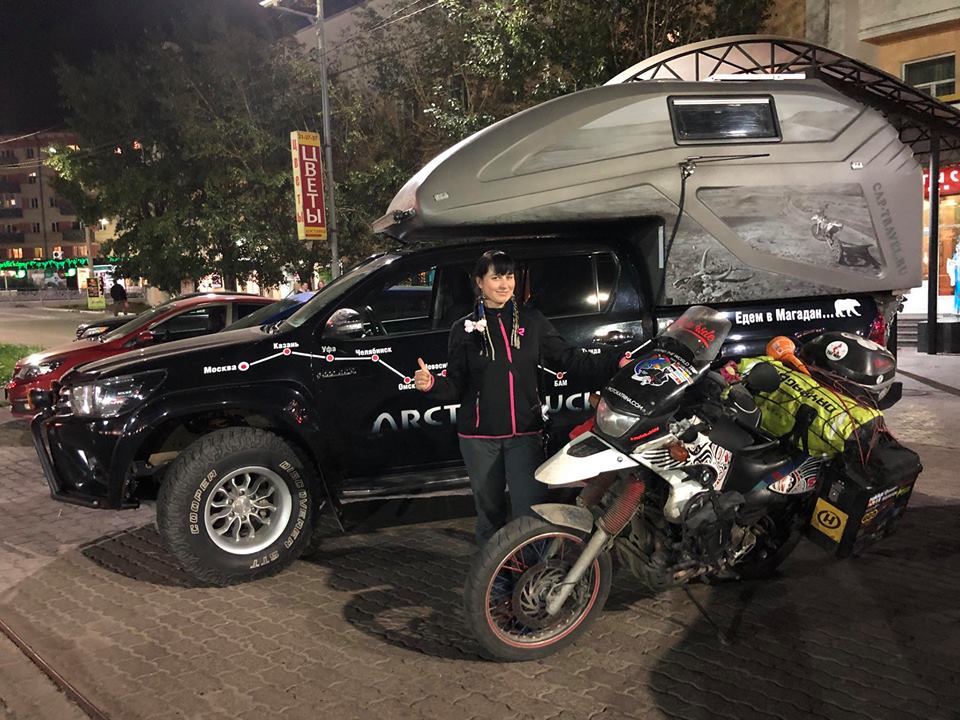
Or to be more precise, she is going to conquer them by her motorbike Henry (that's what she calls her two-wheeled friend). Now she is at the very beginning of the journey, although she already has 12,000 km left behind! What a brave girl!
Fifty kilometers from Ulan-Ude there is a very unusual and incredibly beautiful place called the Omulevaya rock. If you climb to the top, then you'll see an awesome view of the Selenga river and the surrounding area.
In general, Buryatia is very interesting for its nature. And there are also many villages where Old Believers live. In the 17th and 18th centuries, they came to this area in order to escape from persecution. Their settlements are distinguished with tidiness, sturdy log houses and carved platbands, painted in bright colors.
The capital of Buryatia itself, especially its central part, made a good impression on me. I saw a beautiful square with a lovely fountain, a theater, modern hotels and shops. And Lenin's huge head (the largest in the world) in front of the administration building is really something incredible! By the way, Vladimir Ilyich, for some reason, looks like a Buryat. Apparently, the sculptor really wanted to flatter the locals and he did it. :)

And 37 km from Ulan-Ude there is one place that shouldn't be skipped. Ivolginsky Datsan is the centre of Buddhism in Russia and a place of pilgrimage for adherents of this religion from many countries. There, in one of the temples, on a high pedestal sits the lama Dashi-Dorjo Itigelov in the "lotus" position. He had been buried in 1927 and 75 years later was raised in an almost unchanged state of the body and transferred to the datsan. His body is said to be alive now and sometimes he even opens his eyes, which is hard to believe. However, he certainly looks better than the leader of the world revolution, who settled on Red Square.
Unexpected meetings with interesting people on this journey take place on a daily basis. Yesterday I met the president of the Wild Siberians club in Krasnoyarsk, whose name was Alexander Shestakov. He turned out to be not only an experienced biker, but also a talented and enthusiastic person.

The excursion around the private museum of retro motorcycles, which was conducted by his father, made an unforgettable impression! I don't exaggerate it at all.
Motorbike models of the 30s, 40s and 50s of the last century were carefully restored in detail. Almost all their components are original and were assembled all over the world. Some of the motorbikes initially had looked like just a pile of rusty iron and had been restored within a few years.
There is a German Zondapp, a BMW, a Harley Davidson and domestic models, all in perfect condition. You can take any and go by it. Each of them has its own story! I can't even guess how much this collection costs. It seemed to me that it was invaluable.
I like to meet and communicate with enthusiastic and extraordinary people! They not only charge me with positive energy, but also expand my horizons and teach me a lot of new and interesting things. Just great!
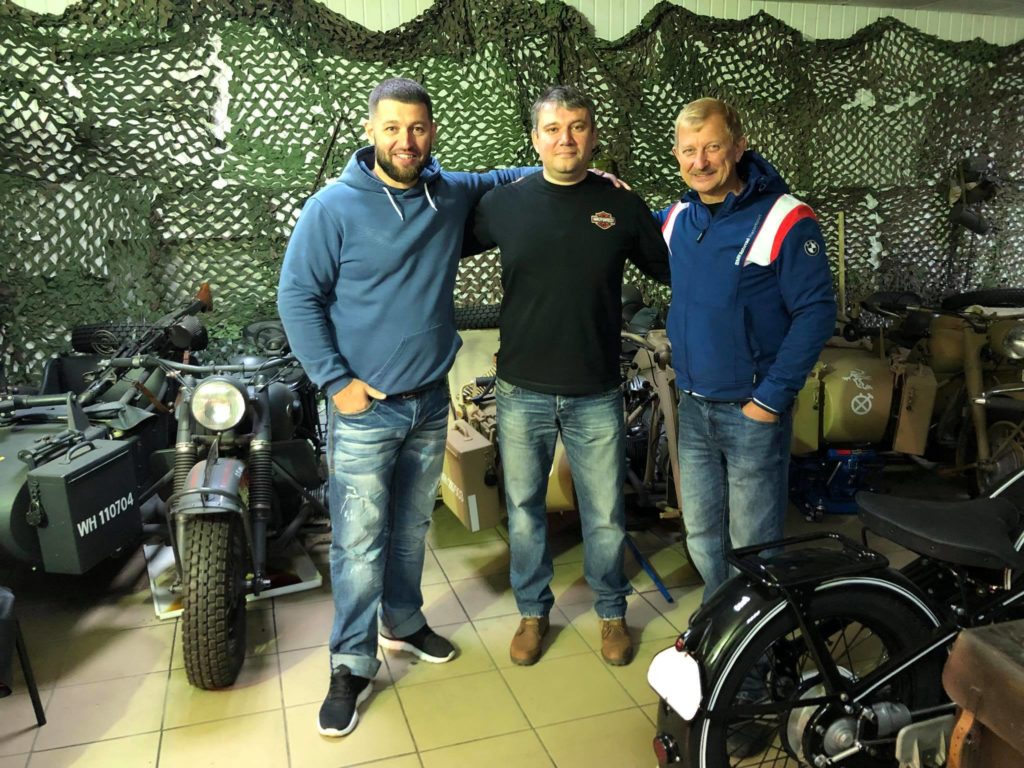
Today I had a full car maintenance done all day and in the evening I left Krasnoyarsk for Novosibirsk. The weather has become worse. It rained and snowed, the temperature was approaching 0°C. Having driven 150 km, I stayed overnight at one of the petrol stations. There is a short distance left to home: just 4000 km.

Behind me there are several time zones and 7500 kilometres passed from Magadan. There are a few less ahead! The nature around me changes every day and so does the weather. Yesterday, when I left Krasnoyarsk, it was raining and snowing. To Novosibirsk I had been driving for several hours in the downpour, feeling happy that I was not riding a motorbike that time.

I did not stop at Novosibirsk as the huge metropolis does not attract with its fuss and traffic jams. All these hypermarkets like Ikea, Auchans, glass skyscrapers and city hustle and bustle tends to make me tired. I stopped at the parking lot and spent the night at the motel with truckers. I cooked the dinner in my cozy room: some dried venison, fried potatoes, a hundred grammes of Macallan whiskey, pies and herbal tea with homemade raspberry jam, which I had purchased from roadside sellers before, made up a wonderful meal that I had under the patter of rain onto the roof.
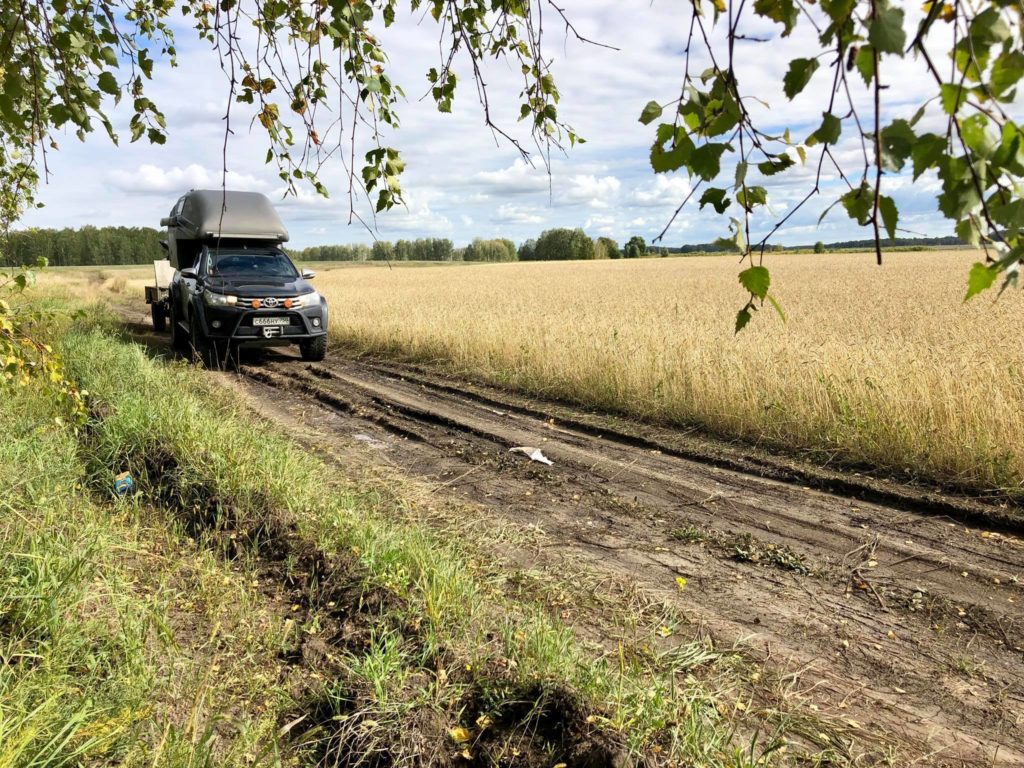
In the morning I woke up from the bright sunshine peeping into the house through the side window. The weather was gorgeous! By noon the temperature had risen to +18°C, the sky was clear, it was sunny and dry. I rode along an almost perfect highway. That's just a traveller's dream!
After Novosibirsk everything became civilized. There were petrol stations, motels, shops, car washes, cafés every 30-50 km. In comparison with Kolyma and Yakutia this seemed to me unusually surprising, as I had already got used to broken roads and lack of services.
And the landscape around was really gorgeous! The golden autumn looked like it must be painted by artists.
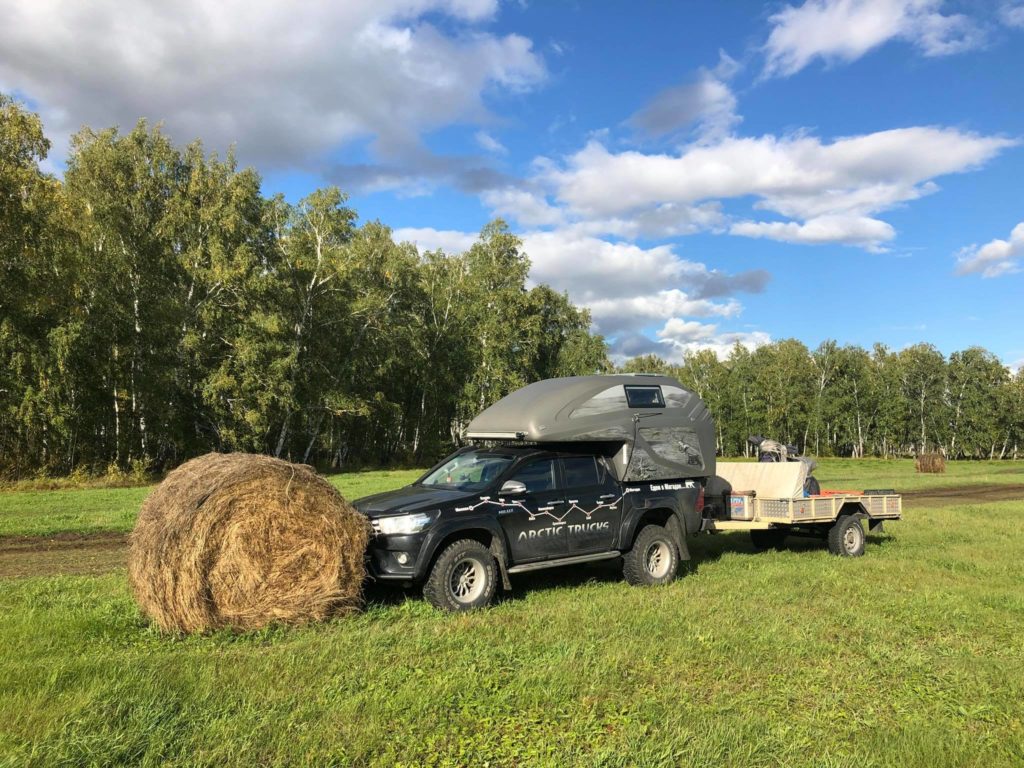
"Well, it's a pity that I am not going by motorbike", a thought came to my head and, having turned off the highway into the field, I drove along the ground road. I kicked huge rolls of hay, went for a walk in a birch grove, cut reeds in the swamp and, for some reason, took them with me.
I stayed overnight on the bank of the Irtysh river. A yellow path from the rising moon ran across the water directly to the entrance of my dwelling. I felt a little sad that another day of my journey is coming to an end.

I have just crossed the Urals. Goodbye Asia and hello Europe! In three or four days I will be home. :)
There is such a town near the Ural mountains called Kurgan. Of course, I had heard of it and even knew that it was situated somewhere in Russia, but nothing more. All my knowledge about this town could be contained in a couple of sentences.
Firstly, there was a factory that produces infantry fighting vehicles (I still have the driver's license for it somewhere in the drawers).
Secondly,
buses of the KAVZ brand are made there. Do you remember those with a "muzzle" from GAZ-53? However, now more modern models are coming off the assembly line. And that's all.

A two-hour walk around the town centre did not add much information to my knowledge. There is a fairly large square in front of the administration building; Lenin with a cap in his hand; a cinema; a simple drama theatre building; sidewalks with broken curbs and old asphalt; a small park with a monument to lovers; a post office, in front of which there is another monument to the postman; a church, shops; hairdressers and some mobile communication salons.
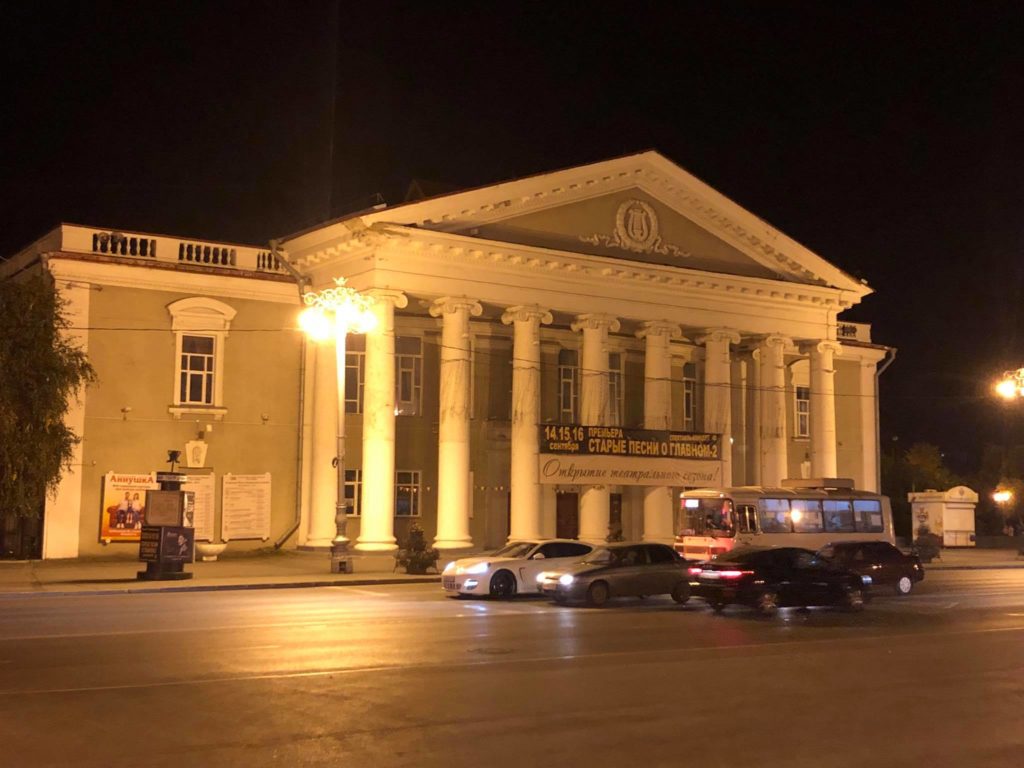
There's nothing remarkable.
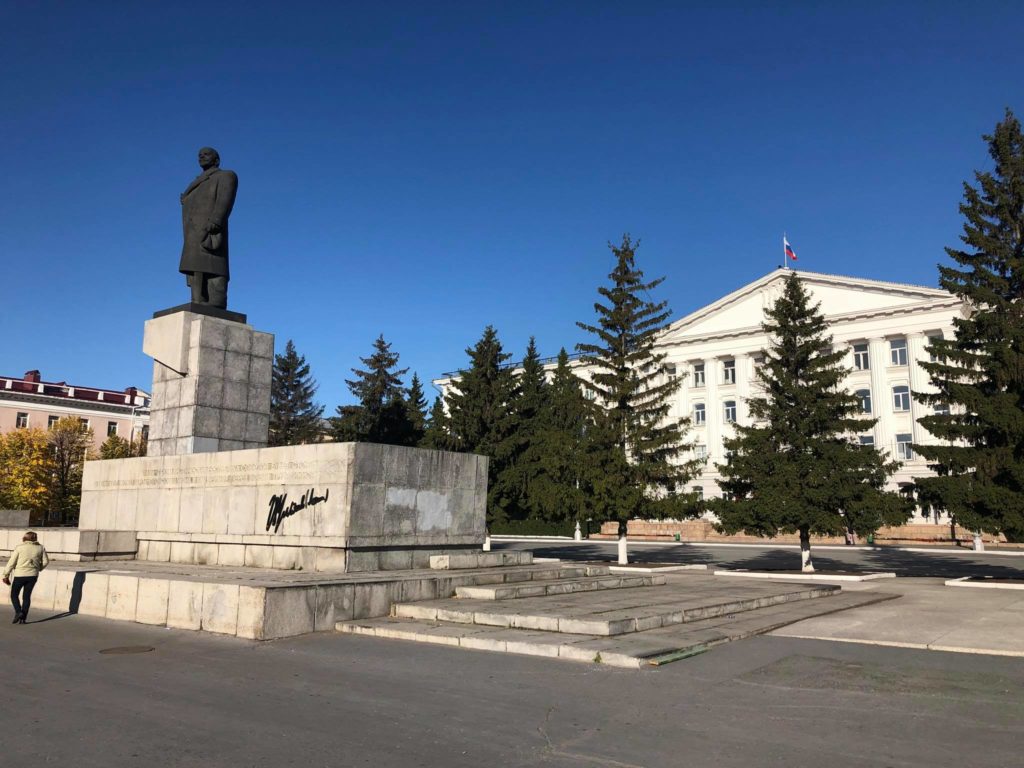
I came into a cozy, small, half-empty café in English style and ordered a steak. I asked the waiter, a charismatic 22-year-old guy with tattoos, whether there were any interesting sights in the town. He thought for a while and replied: "No, there isn't anything that interesting".
I received a similar answer from the receptionist at the hotel.
Therefore, Kurgan remained a town "without a zest" in the heartland of Russia. It's like a town that Gogol described in his comedy «The Government Inspector»: "From here you won't reach any state, even if you ride the horse for three years". Kazakhstan does not count. :)
Although, maybe I missed something outstanding.
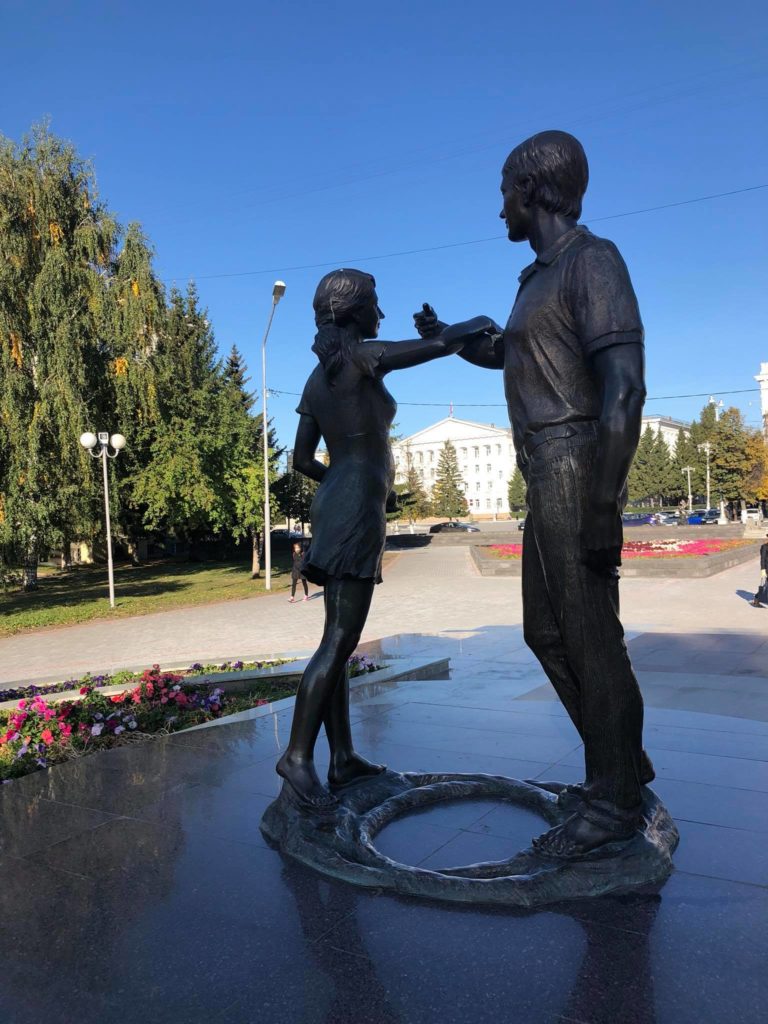
If not a book, then a whole story can be written about each of these towns. But there is no time for writing, since I always want to see as much as possible and talk with the residents. And the road is a little tiring and monotonous, because you can't accelerate by car with a trailer, so you have to crawl after trucks for a long time at a speed of 70-80 km/h. And there's a huge number of trucks on the M-5 highway!
I've come to Chelyabinsk for the first time, so I decided to take a guide to explore this industrial metropolis and I didn't regret it! A wonderful guide and a very pleasant woman with a rare name Marfa led me around the central part of Chelyabinsk and showed many interesting things.
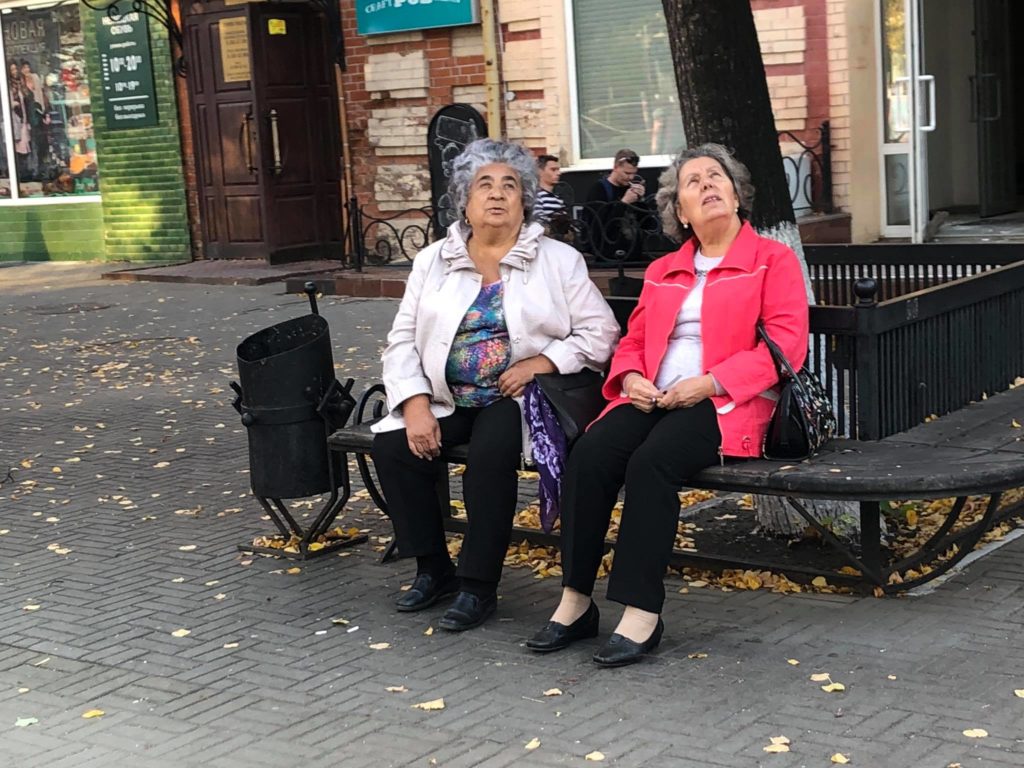
Thanks to her, I got a good impression of the town, which will be remembered not only for factories, plants and "Mikhalych in red underpants", but also for beautiful avenues, bridges, modern skyscrapers, historical buildings and its clean and very attractive pedestrian street, a kind of a local "Arbat".

But Zlatoust, a small "single-industry town" in the centre of the Ural mountains, disappointed me with its neglected look. It is clear that there are a lot of problems here. Either there is a lack of budget, or the authorities do not care about anything. Even in the town centre there is dirtiness and garbage, the monuments are in terrible condition. Shops and advertising are like from the 90s and in general it seems that the city has been stuck in the last decade of the last century.
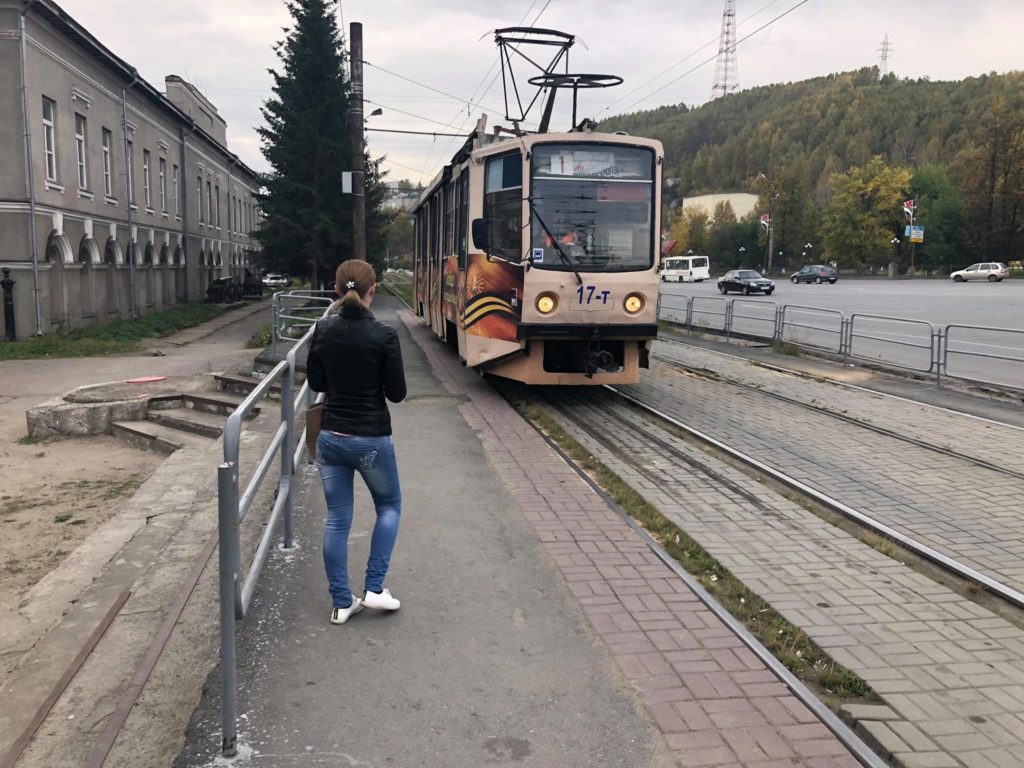
I went to the museum of the famous weapons factory, founded two hundred years ago. This unique enterprise was created in order to produce edged weapons and provide the Russians and then the Soviet army with checkers, sabers and knives. At the beginning of the 19th century about a hundred specialists from Germany were sent there to teach our masters.
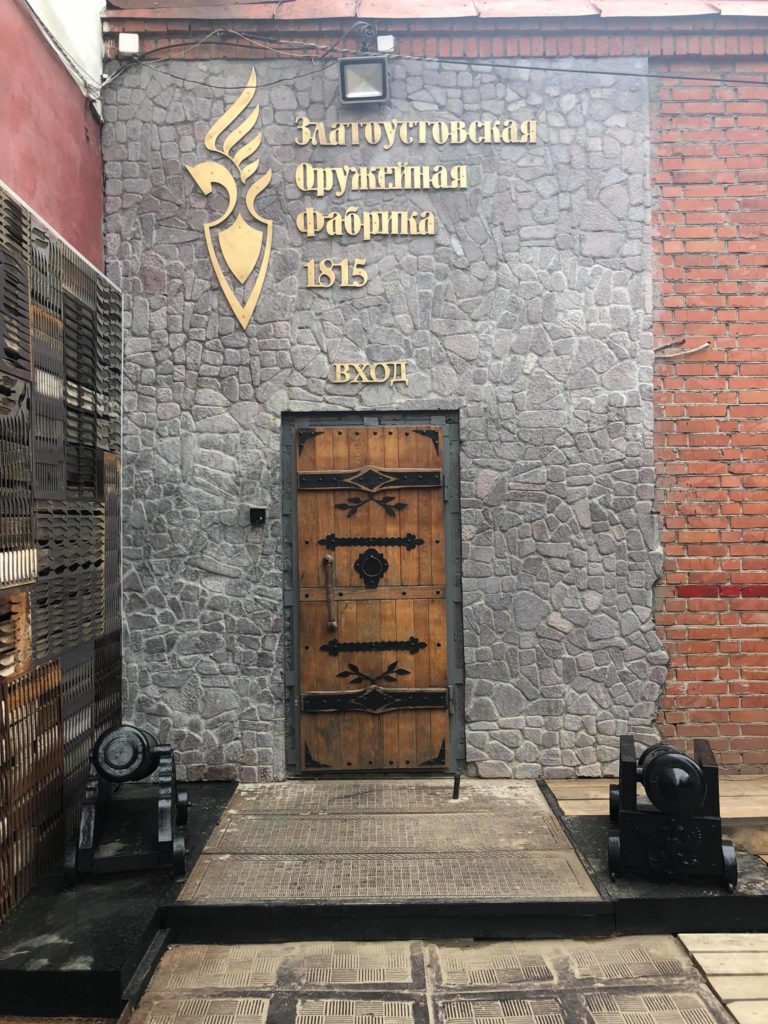
And what unique jewelry items were produced in this factory! Such cutlasses, swords and knives decorated with gold and precious stones can be seen in the museum. And all this enterprise was ruined, bankrupted and almost completely destroyed in the 90s. Now the factory is functioning but, to put it mildly, only one building remains of it. The rest of the territory makes a sad sight.
I arrived in Ufa, the capital of Bashkiria, late in the evening and settled in a hotel near the centre. Then I went for an evening walk around the city and had dinner and a glass of white wine at the wonderful restaurant "Your company" on my own. It appeared to be a good idea to eat something else besides the dumplings in roadside eateries! :)
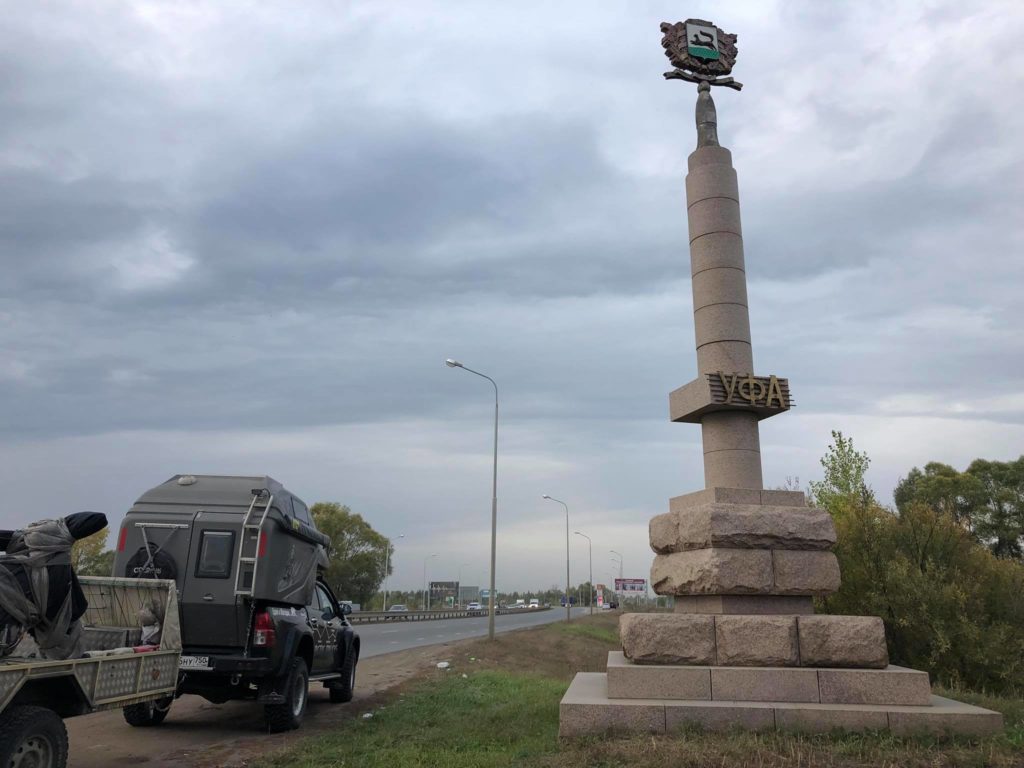
Ufa, as well as Chelyabinsk, is a million-strong city with wide avenues and glass skyscrapers that belong to banks and oil companies. In general, I liked it. There are well-groomed parks, a huge sculpture "Salavat Yulaev" on the high bank of the Belaya river and many decent cafés and restaurants. I wanted to continue my exploration of the city the next day, but at night the sky was covered with clouds and it began to rain heavily. Walking and taking pictures in such weather is quite uncomfortable, so I had to go on further.
The next stops will be in Ulyanovsk and Saransk.

Some people say that money from all over Russia is flocking to the capital. A lot of money! Today I imagined Moscow as a huge bag the size of ten Ostankino TV towers, stuffed to the brim with money. At the tipping point it overflowed, burst out and the money flowed in different directions. A lot of it has flowed south, to Grozny, Sochi and the Crimea. Not so much to Karelia and to the Kola Peninsula. And if you look at the map, everything becomes clear: the Crimea and Sochi are located at the bottom and Murmansk is at the top, therefore, the law of universal gravity must prevent money from flowing there. A river of money is said to have flowed to Dagestan, but it was lost somewhere in the mountains. Then the trained people were sent there from Moscow to search for it and it seems that something has already been found.
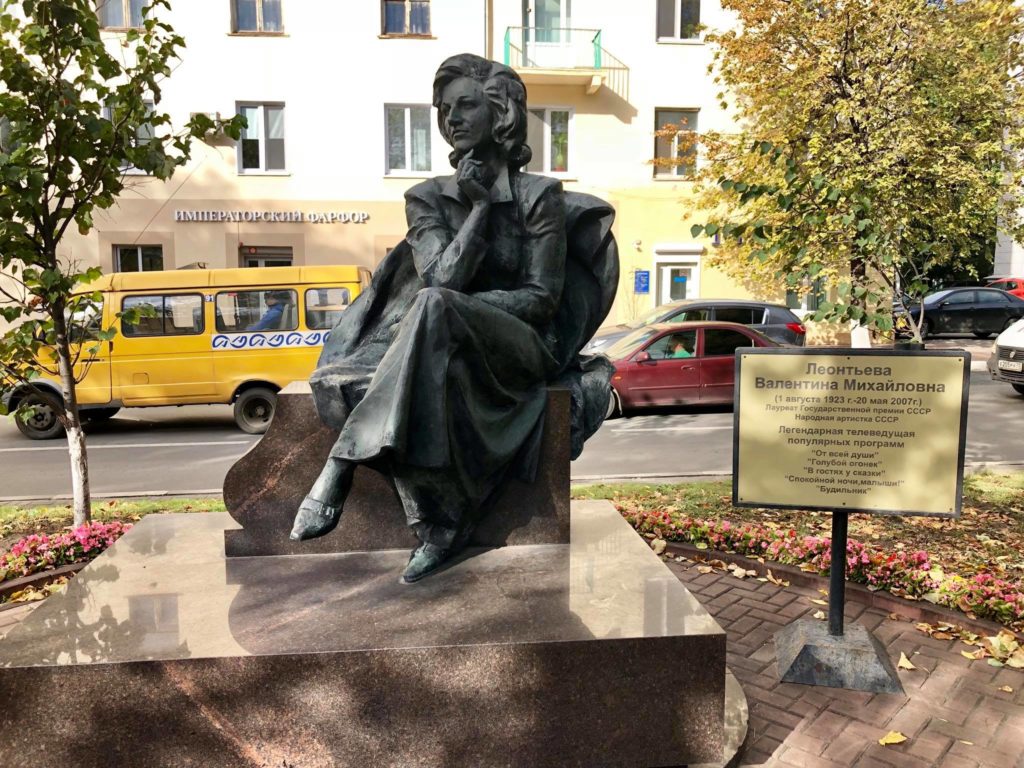
And in the east the money got stuck in the Ural mountains. Just a couple of springs trickled through the gorges to Tyumen and Yekaterinburg. And only a few banknotes were accidentally blown to Kolyma by the wind, however, even those were lost in the corners of the governor's offices. What's more, someone saw a tornado hit and took a lot of money somewhere far away, to the west (some see it in London and Nice), but that all are certainly rumours that have been refuted by our authorities.
Meanwhile I'm slowly going east and I see how this money has already turned into good roads and beautiful towns. Today I saw Ulyanovsk and Saransk.
Especially Saransk, the capital of Mordovia, surprised me in a good way. I hadn't expected to see such an urbanism here: wide clean avenues, a huge stadium in the shape of an orange ring, tiled sidewalks, modern beautiful houses, parks and streets with gorgeous blooming flower beds. And the Cathedral is almost as big and beautiful as the Cathedral of Christ the Saviour in Moscow. I was walking around Saransk for two hours, then had lunch at the excellent "Big Pig" restaurant and took a circle on the Ferris wheel in a lovely park. I have only positive emotions left!
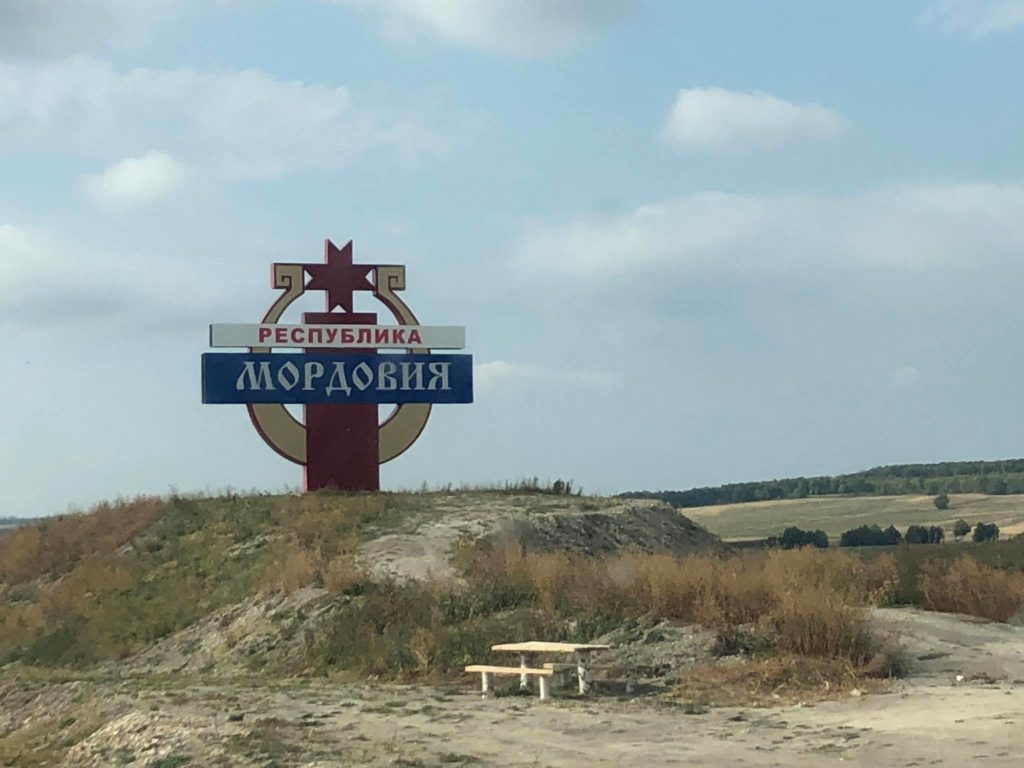
Ulyanovsk made a good impression on me too. It is a cozy, clean and green city, with lots of flowers and various monuments. There is even a monument to the letter "ë". Besides that, you can visit a very good complex, dedicated to the memory of those who died in the Great Patriotic War and other wars or conflicts. Everything is thoroughly thought out: the sculptures, the obelisks. There is no vulgarity or hack work. I also drove along probably one of the longest bridges across the Volga (and here it looks unrealistically as wide as the Black Sea!)
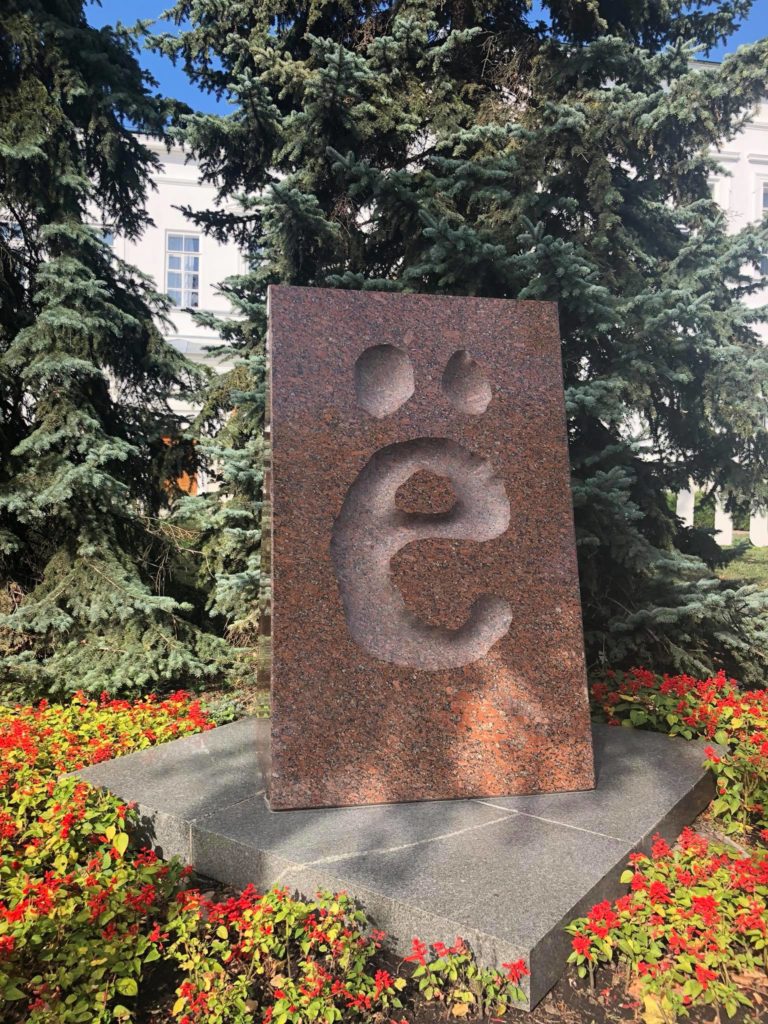
And finally I was lucky with the weather! A sunny and warm day gave me a chance to go for a pleasant walk and take some good photos.
comments powered by HyperComments
 Cap-travel.ru
Cap-travel.ru

